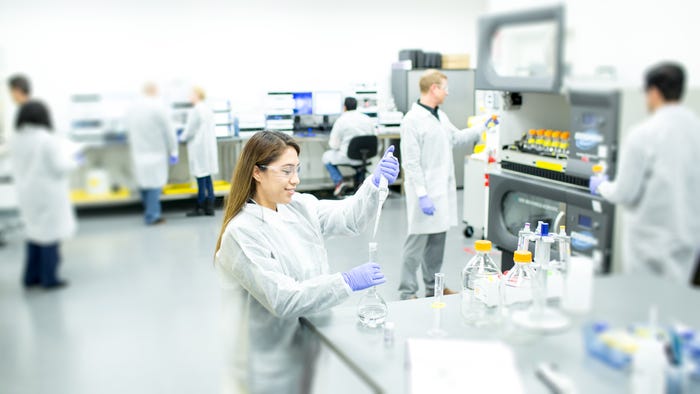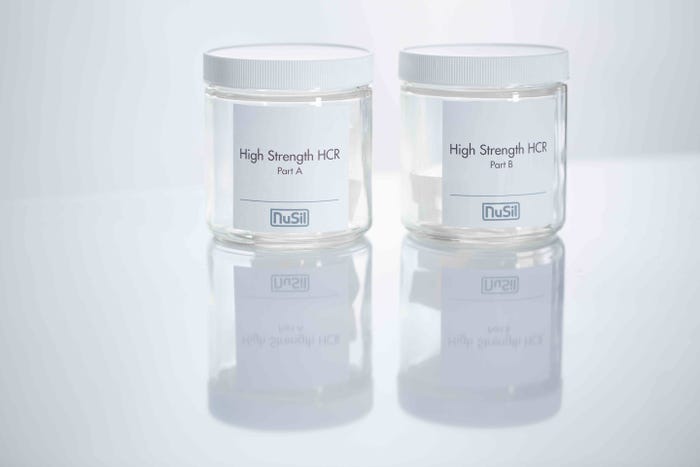April 4, 2017
Silicone's versatility could help address challenges in drug delivery and healthcare.
Silicone is probably one of the "most studied biomaterials in existence," said James Lambert, director, life sciences R&D, for the NuSil brand of silicone.
|
The Trelyst team of experts taps silicone's potential to create new delivery systems that make it much easier for patients to get their medication. |
But despite an extensive body of knowledge that's flowed from such research, the material may still hold a few surprises. "Users are familiar with the family of silicones they've been using, but they may not be familiar with the flexibility of silicone chemistry--it can be tailored across a range of properties, from soft to hard, from lubricious to sticky," said Julie Cameron, vice president, sales & marketing. The team told Qmed that silicone can take different forms and shapes, and by changing the chemistry, different properties can be achieved. "We're willing to support that customization at any scale," she added.
"Silicone is nowhere near its maturity, and we're nowhere near finished innovating," added Lambert. "Some possibilities haven't yet come to market."
Lambert and Cameron spoke with Qmed at MD&M West, where the company was celebrating last year's NuSil Technology merger with Avantor, a supplier of ultra-high-purity materials for the life sciences and advanced technology markets. NuSil has been well-known for its silicone technology, and Avantor has been a leader in biopharma, research, and electronic materials. Together, the two plan to tackle healthcare issues such as patient adherence, concerns about product longevity, and even the drug-patent cliff, explains Ashish K. Kulkarni, executive vice president and chief technology officer of Avantor. "By combining two worlds we've got a lot of possibilities," he said, pointing to drug-delivery devices such as patches, implantable devices, and drug-eluting stents.
Silicone's tailorability is expected to play a central role in the new Avantor. "You need the ability to tailor a polymer to release the drug in a specific time frame, such as 7 days, 21 days, or even 6 months," Cameron said. And "silicone can be tailored," added Lambert.
Kulkarni said that "I'm new to silicone, and coming into this industry, this is surprising. Silicone's versatility for tailoring generally exceeds other polymers," he said. "We want to solve new problems."
For instance, the team discussed the Trelyst brand, a silicone design and manufacturing organization launched in 2014 that broadened the company's family of drug-delivery solutions.
Avantor also highlighted its newest line of NuSil brand medical-grade LSRs (NuSil brand MED-5800 Series) developed for liquid injection molding of precision components for implantable lifesaving, life-changing devices. These LSRs feature more-efficient rheometry, or "cure profiles," and more consistent viscosities, the company reports, which results in better in-mold performance, more efficient fills, lower flash, shorter cure times, and less waste in manufacturing.
|
NuSil High Strength HCR (high consistency rubber) offers a tensile strength of up to 50 percent greater than that of existing silicone elastomers on the market and a combination of material properties that not only make it strong, but also uniquely soft and pliable. |
For high-performance extrusion needs, Cameron points to "NuSil brand High-Strength HCR, which yields 50% greater tensile strength compared with anything adverstised on the market," she said. "It brings it to the border of latex."
Kulkarni believes that Avantor's structure can help drive innovation to tackle challenges throughout the life sciences value chain. "Our innovation model is contemporary--no customer is too small, and no challenge too big," he said. "And we continue to bridge the gap between pharma and medical devices."
For more information, visit www.avantormaterials.com.
Daphne Allen is executive editor of Pharmaceutical & Medical Packaging News and a contributor to Qmed. Reach her at [email protected] and on Twitter at @daphneallen
**************************************
To learn about "Designing Successful Medical Devices with the End User in Mind," hear Gregg Draudt, Product Design Group Lead - Global Medtech, Cambridge Consultants, speak at the upcoming BIOMEDevice Boston event on Wednesday, May 3.
[Above images courtesy Avantor]
About the Author(s)
You May Also Like






